Another day in paradise, another crazy week of summer weather. 127mm, or in the old school talk, 5 inches of rain fell during the week. That’s rather a lot of water to deal with. About a third of the rain descended in 20 minutes on Wednesday afternoon. It was utter mayhem out there at the time, and trust me, umbrellas barely work in those conditions. At such wild moments, a bloke has to dodge lightning, run around keeping drains working, and clear out the water tank inlet filters. We experienced a landslide many years ago, and know what needs to be done to avoid that awfulness recurring. A person can always dry off afterwards…
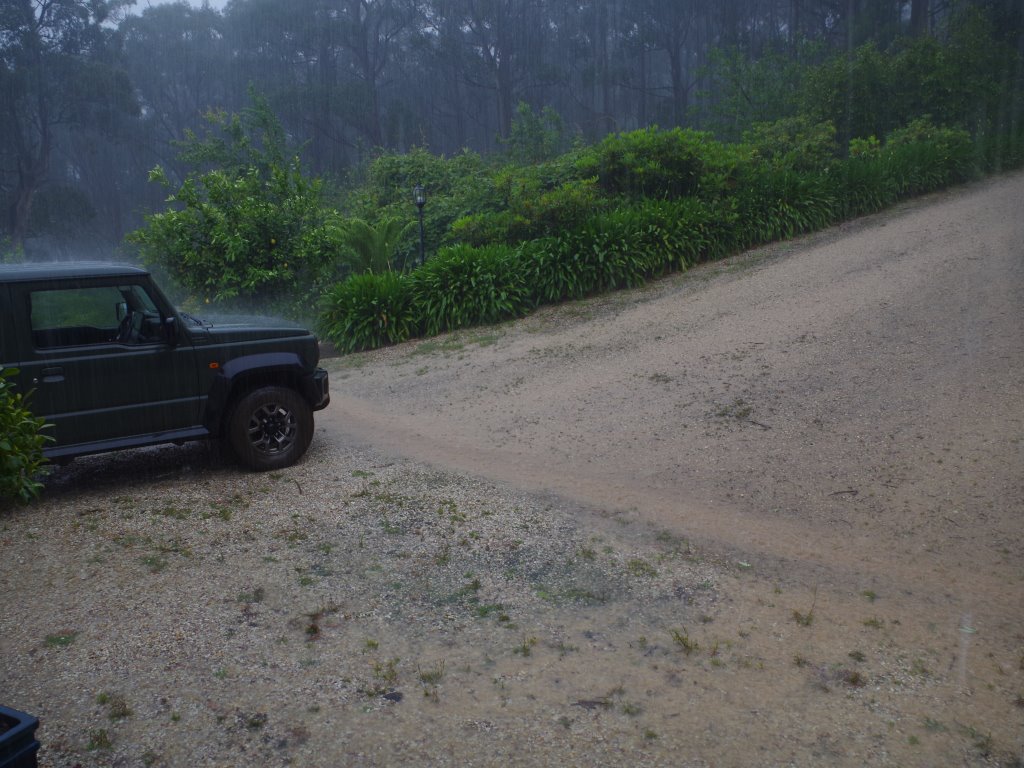
Ordinarily, at this time of year we’d be bringing in the firewood supply for the next twelve months of use. Firewood gets cut and split at other cooler times of the year. It’s then left in a big pile to season and dry out for at least two years in the summer sun. In past summers, all we’ve had to do is haul the stuff back up the hill, then stack the stuff (neatly) in a shed where it will stay dry during the wet winter months. Using wet firewood is a cardinal sin here. That lead to the destruction of the previous wood heater. An expensive lesson to learn.
Firewood should be around 14% moisture content before use, lest the steam produced in the combustion process destroy the steel plate used in wood heaters. The extreme UV radiation from the summer sun is the absolute best way to dry firewood. But with all this rain, it sure is hard to keep the seasoning firewood dry this year, let alone anywhere near the optimal 14% moisture content.
Eventually, the weather gods smiled upon the mountain range, and provided a four day break from the rain. Ah, nice warm-ish summer weather. A day of sunshine was required to dry the ground out. The paddocks were wet enough that using the machines would rip up the paddocks. As of today, we began hauling the firewood back up the hill. Two more days to go before the next bout of rain.
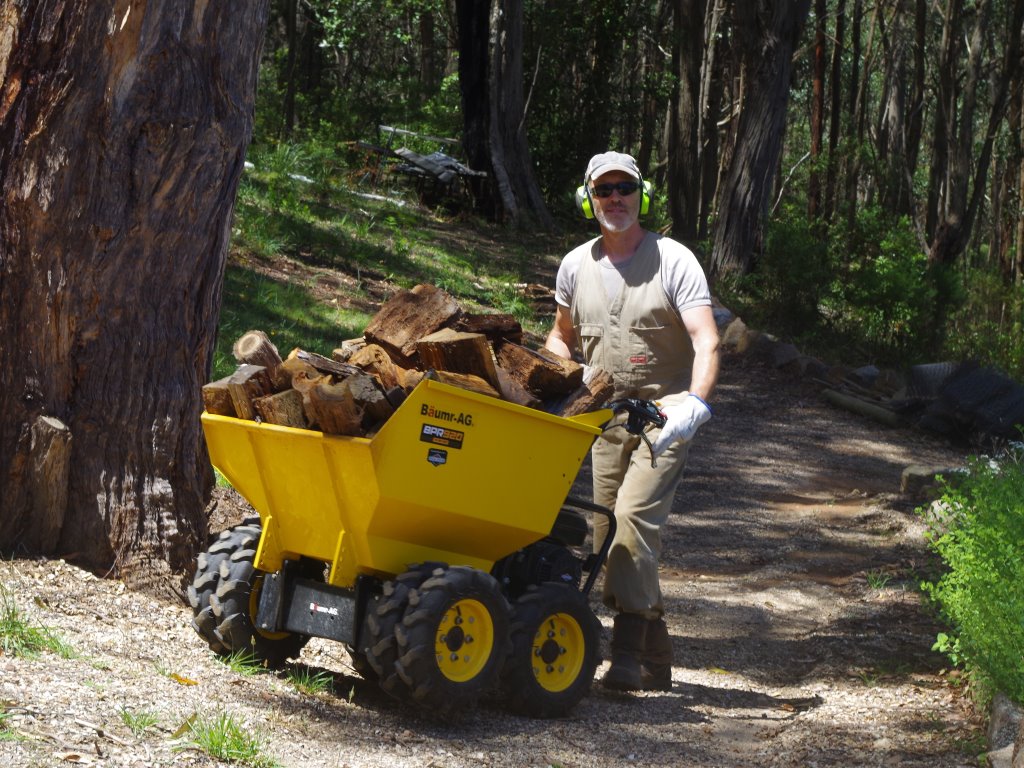
The largest power wheelbarrow and a low centre of gravity mower towing a trailer are both used to haul firewood back up the hill. The logs get stacked neatly in the firewood shed ready to be used in the winter. Or used last night when the thermometer recorded 6’C / 42’F outside. Brr! After a day of hauling and stacking, the shed is about a quarter full. Might have to get up earlier tomorrow morning, and also the day after that, before the next rainstorm arrives.

All this mucking around with firewood, started me thinking about the possibilities of a small portable timber mill. Some time over the next year, we plan to construct a larger firewood shed, and who can forget the endless possibilities a second greenhouse would supply? This is the fourth summer of crazy wet weather, so either project looks like a good idea. But yeah, we need some milled timber for those projects. There are thousands of trees, a couple of hard workers, and some dogs. What could possibly go wrong?
With the idea floating around my mind, and a night with nothing better to do, I began watching YouTube videos on people’s actual experiences with portable timber mills. It’s a red flag for sure when video titles begin with the words: “What I wish I knew”, “Before buying”, or “Why I quit”. Many of the videos even included appealing looking ladies, whom surely aren’t part of the potential purchase.
One of the best set ups for a portable timber mill, had the machine sitting in it’s own shed on a flat and level base. The Canadian bloke had another shed to stack and store the milled timber whilst keeping it out of the weather so that the timber could further dry. And cleverly, he’d made a custom log trailer for his all terrain vehicle which kept the logs off the ground when he moved them to the shed. The logs need to be kept clean, otherwise the bandsaw blades used in the mill will go blunt just like a chainsaw chain does when it hits dirt.
The results were in. Half a brain of economics, a bit of quick maths, and the back of an envelope list including: Mill machine; Spare blades; Two sheds; custom trailer; and vehicle that can tow logs. The results were in – just go and buy the timber for the future projects, it’ll be cheaper. So many of the systems here at the farm are like that, none of them make any economic sense.
Even sourcing our own firewood from here, makes only marginally more economic sense, mostly because the equipment is cheaper and there is a lot less waste. It’s not all bad news, but some systems are less economic than others. Spare a thought for Sandra who reminds me of the economics with the off grid solar power system by recounting my now infamous line: “All we need is a couple of more panels to make the thing work” Well that didn’t work out. The general principle is that sometimes you have to do something, and when the mains power grid goes out for five days after an epic wind storm (which it did about three years ago) at least we’ve still got power. And when people are burning firewood for heating only a week following on from the summer solstice, it’s possible there will be a massive strain on commercial firewood supplies come next winter. The thing is, you have to pick and choose what you want to do. Just don’t expect for it to make any economic sense.
Speaking of not making any sense, two days before Christmas, Ruby ran off into the surrounding forest. The dog had a few opinions which differed from ours. There was a bit of cabin fever due to the wet and cold summer. And also she’s young and dumb. So, she headed off. We couldn’t find her, and she hid from us. However, Ruby came back the following morning on Christmas eve. She was cold, hungry and tired. Clearly it’d been a miserable night. There was no point punishing her because she came back. We can’t do much about the weather, but we’ve listened to her complaints and will now allow her more responsibility. We’ll see how it goes.

During the crazy wet weather, there was a brief break in the rain of a few hours. Those hours were used to bring rocks back up the hill for use in steel gabion cages. Over the winter months, smaller rocks are removed from the soil, and placed in various small piles about the farm. Rocks are a handy resource, and we certainly don’t have as many as we could possibly use. Peak Rocks is a real bummer.
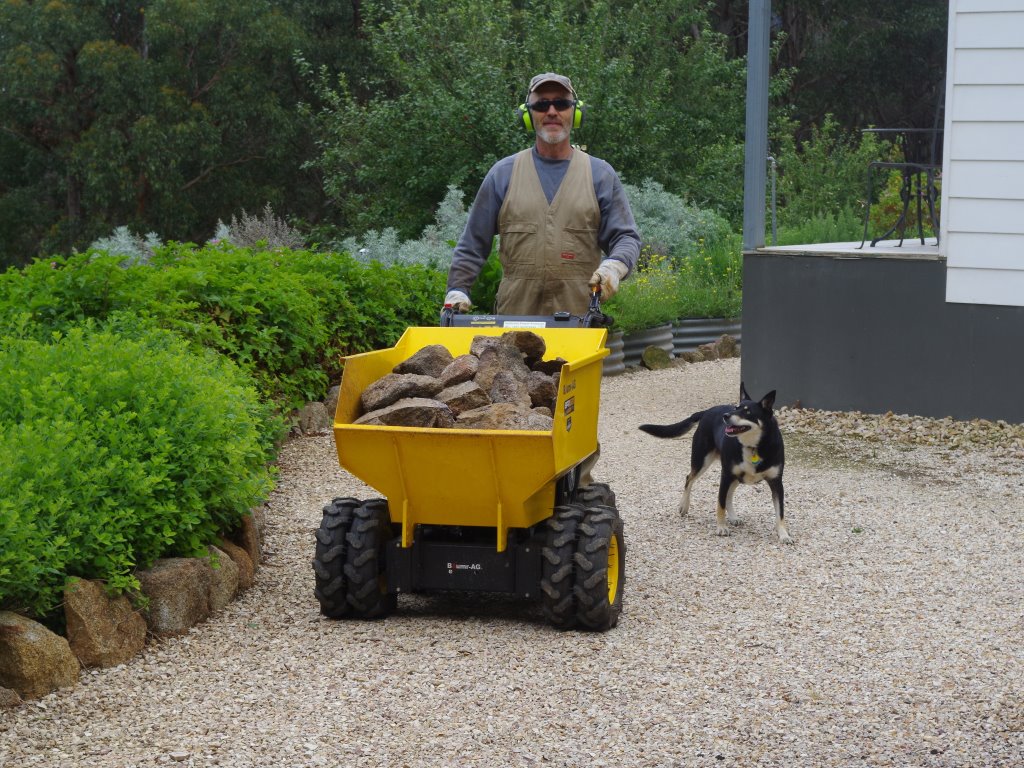
The rocks were used to almost fill two rock gabion cages.
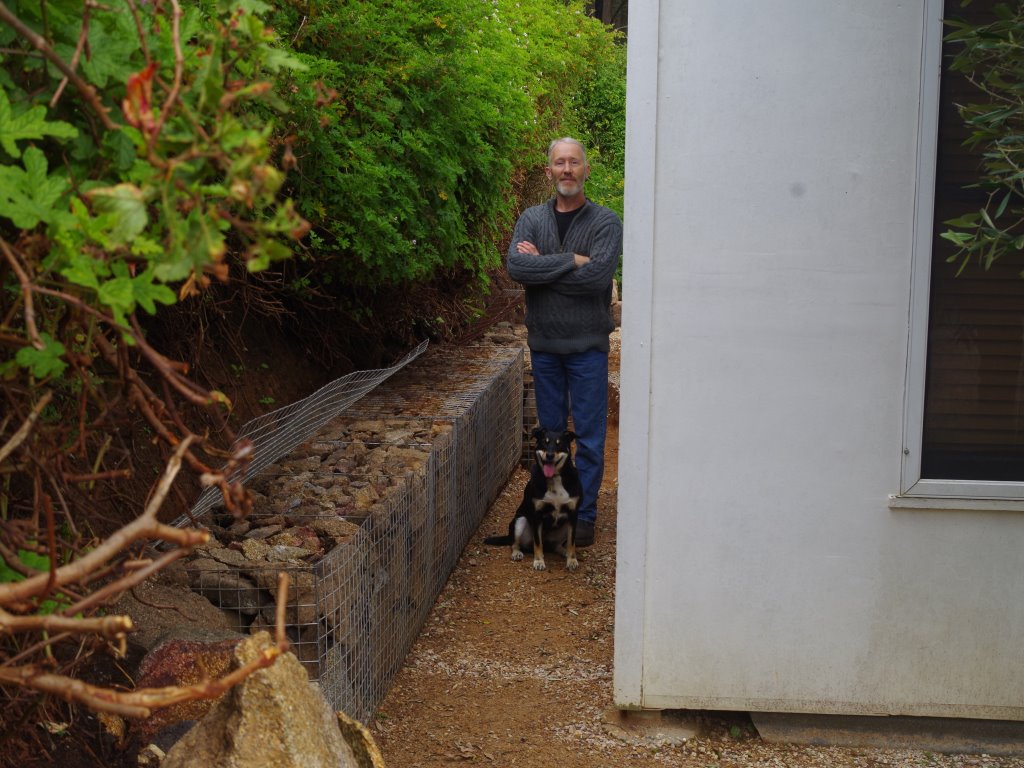
The cold and wet summer weather wiped out the apricot crop here. Fortunately, there is an orchard about an hours drive north of here (further inland), which grows fruit for taste. They supplied 20kg / 44 pounds of sun-ripened apricots which we bottled (canned). That’s about half a years supply.

The preserving system is old, with the newest glass bottles being last made in the 1970’s. Fortunately, the supplier (Fowlers Vacola) still makes stainless steel lids and rubber seals.

After bottling, there were still 3kg / 6.6 pounds of fruit left over. Some was kept aside for breakfast, and the rest was used to make a very tasty apricot jam. Yum!
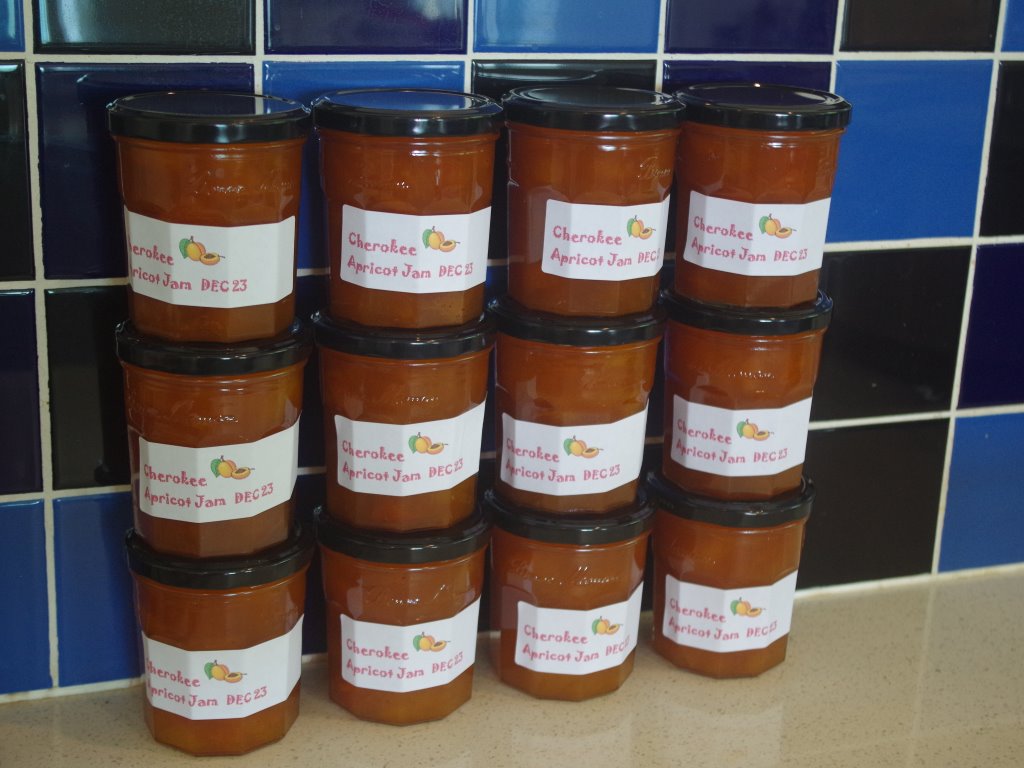
In other jam news, the alpine strawberries and raspberries are continuing to produce fruit. The berries get chucked into the freezer, and when there is enough, we’ll cook them up in a batch of jam. In a week or two, depending on the weather, the blackberries will begin to ripen.
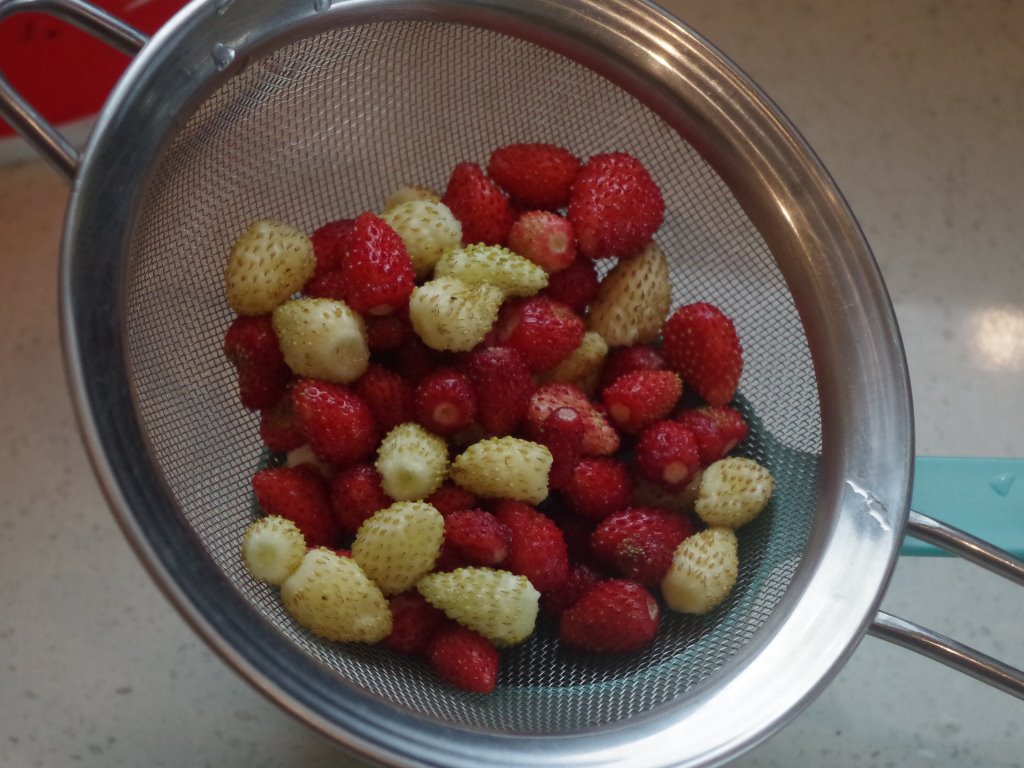
One of the hardiest and most reliable vegetables are the zucchini’s. If you’ve ever grown them, you’ll know what I mean.
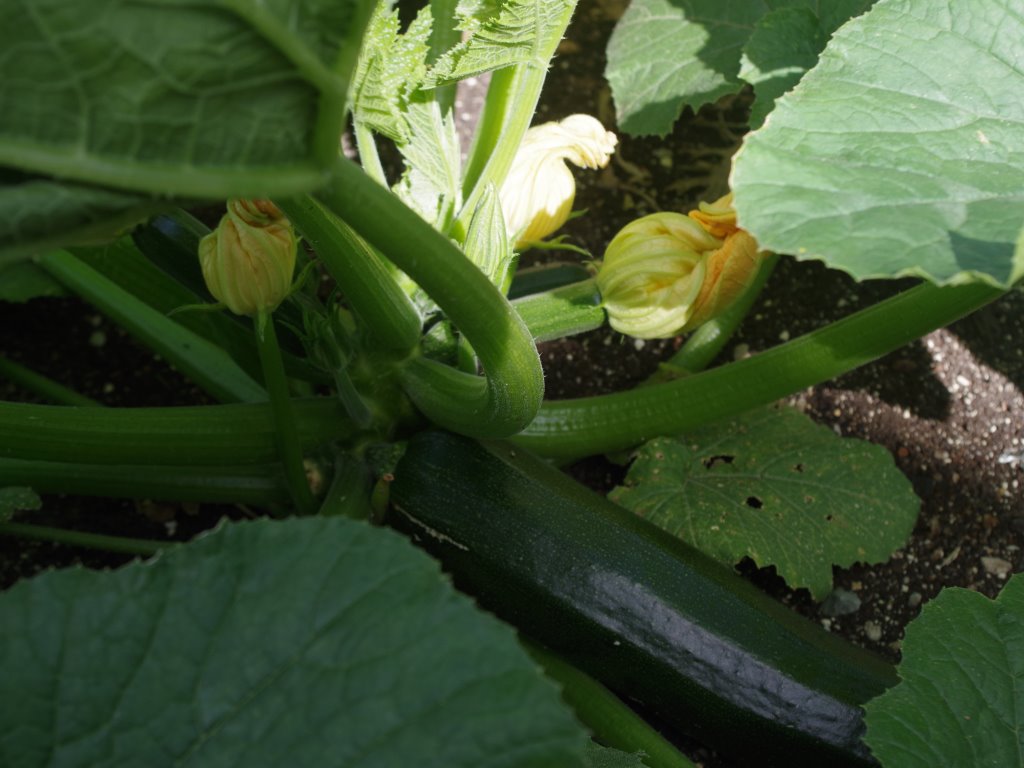
Last summer was also wet, and the zucchini skins split because the fruit took up so much water. With that possibility in mind, we’ll keep a closer eye on them this year.
Every year we try our hand at growing new varieties of vegetables. You never know how they’ll respond to the climate here, whether they’ll taste any good, or even whether we will use them. This year we’ve trialled pink lady slipper radishes, and they’re awesome.
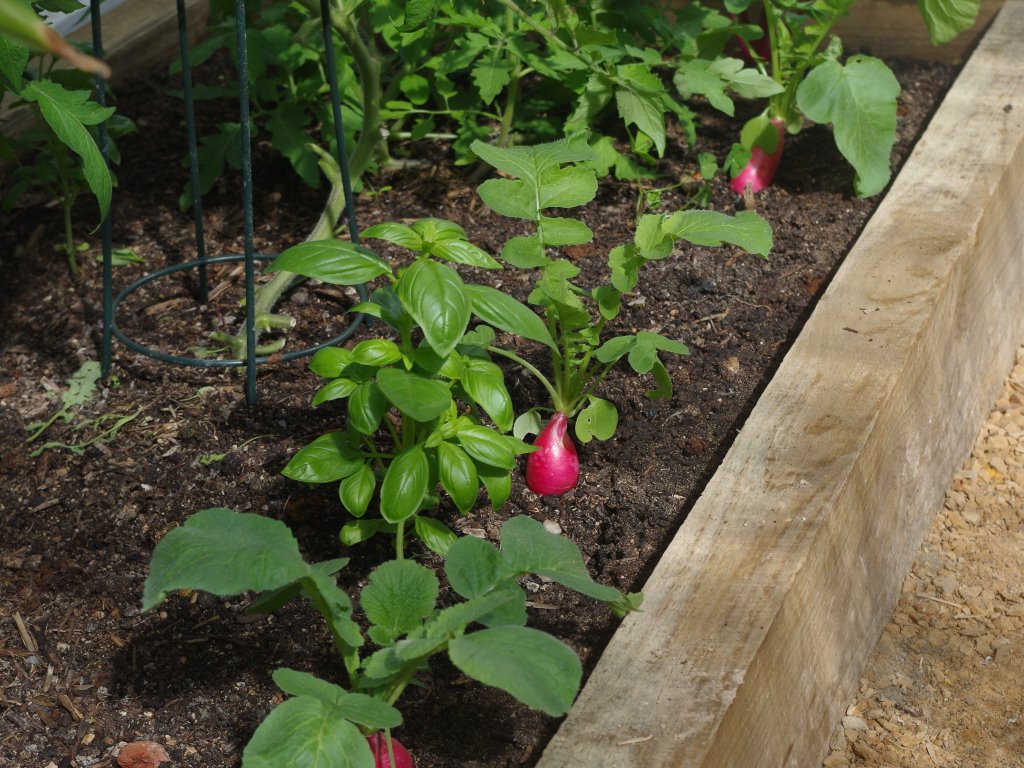
We randomly chose a smaller golden round squash variety to grow this year. Surprisingly it appears to be one of the earlier varieties which has produced some small fruits. You can only hope that they taste good.
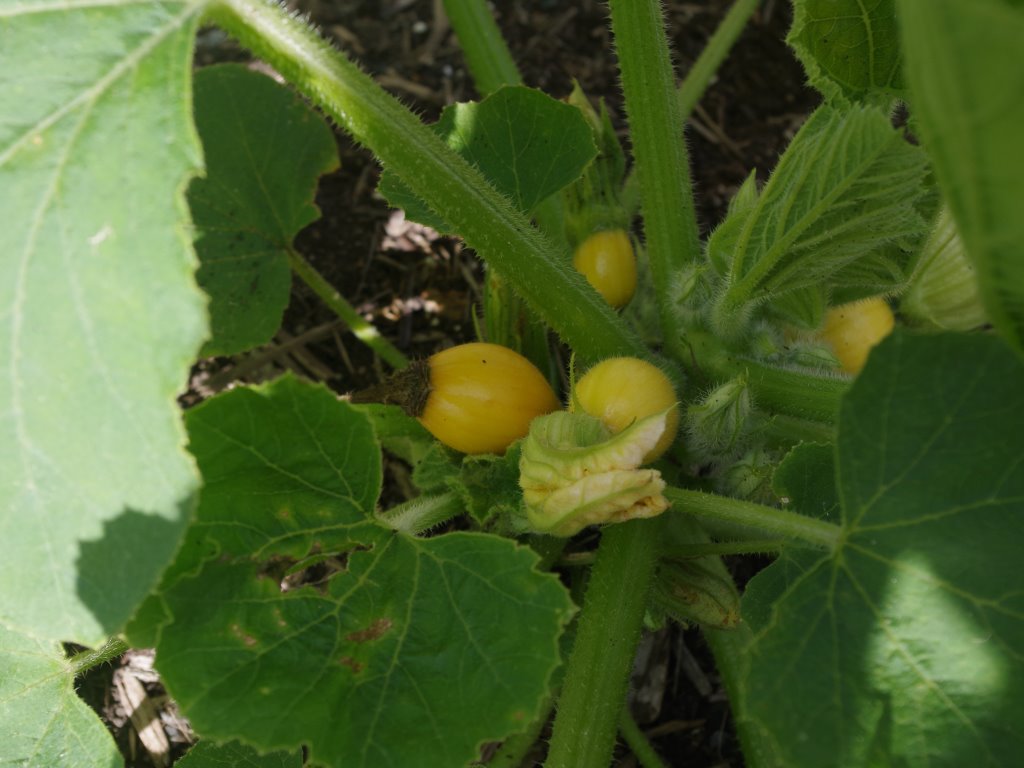
Of the three hazelnut (filbert) trees, there are two nuts. Hope the parrots haven’t noticed them and better luck next year. The stone fruit trees are struggling this year, but the apples, pears, kiwi fruit vines and citrus are all doing well.


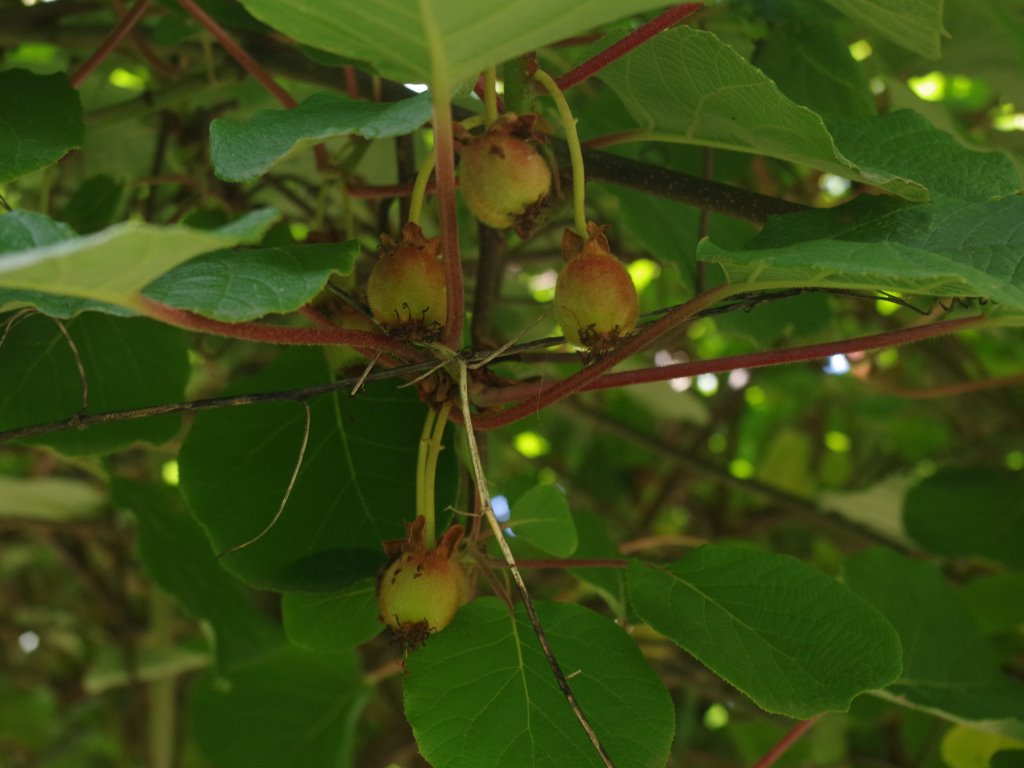
The award for the plant which is enjoying the wet summer the most, has to go to the tree fern which was planted in a drainage basin under a year ago. The bloke at the fern nursery said: Don’t be afraid to water the tree fern! He wasn’t joking.
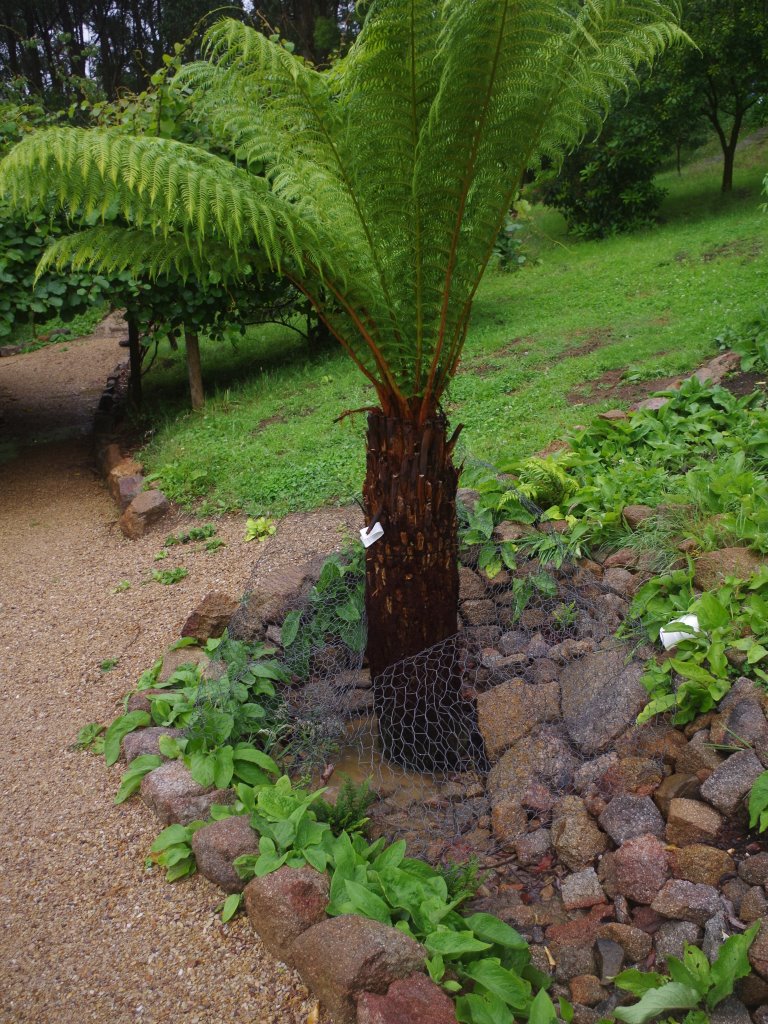
Onto the flowers:
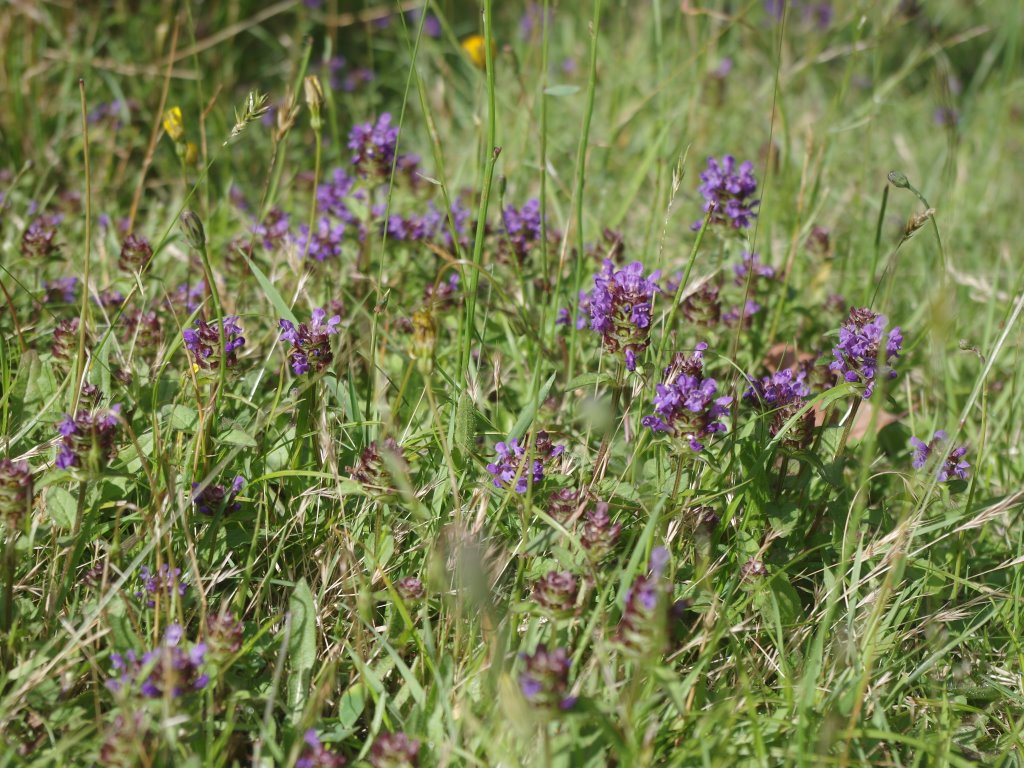
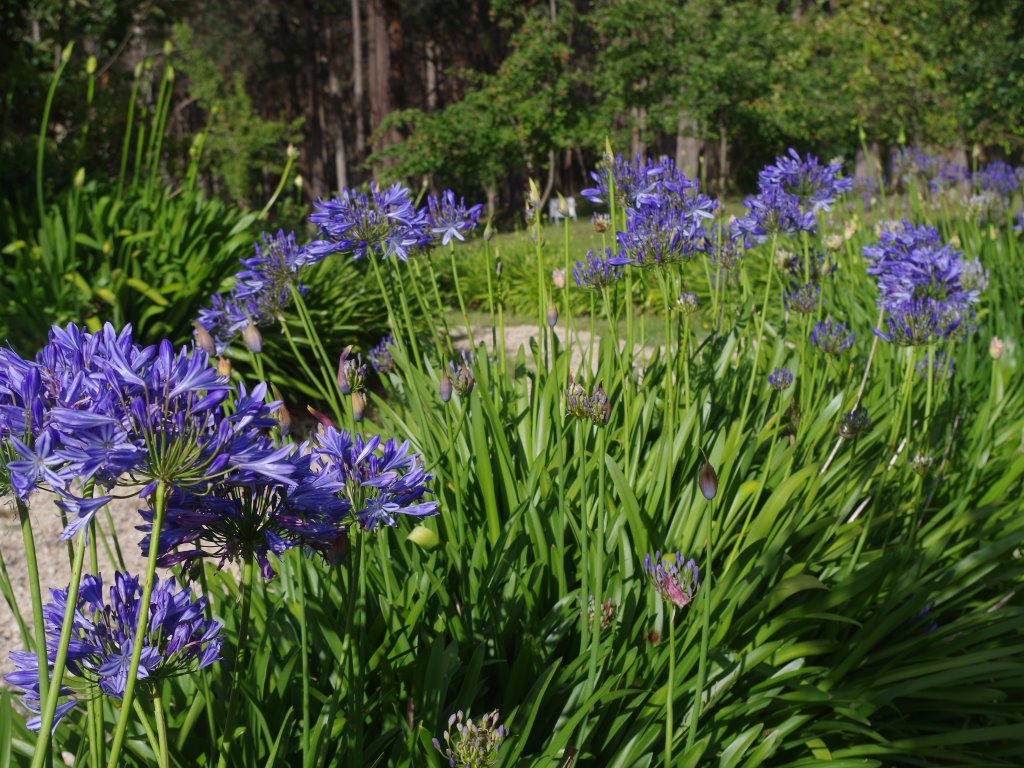
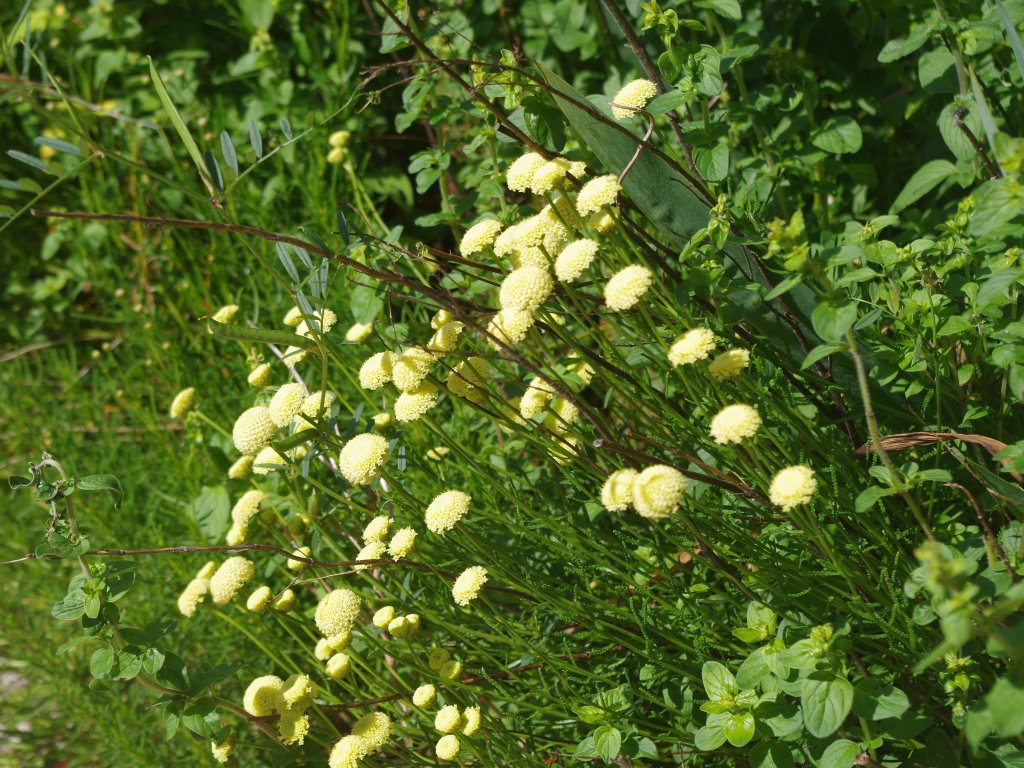
The temperature outside now at about 7am is 10’C (50’F). So far for last year there has been 1,114.0mm (43.9 inches) which is up from last weeks total of 986.8mm (38.9 inches)
